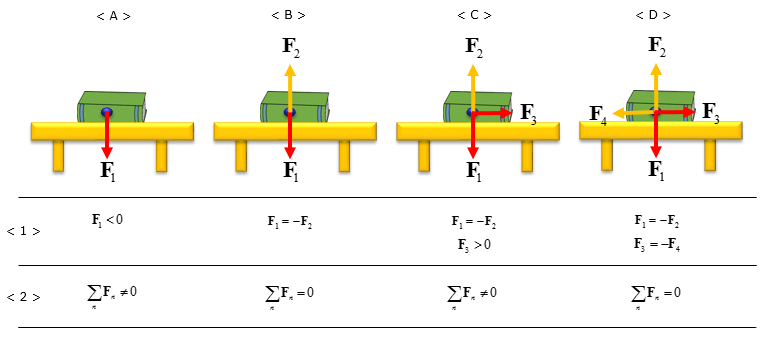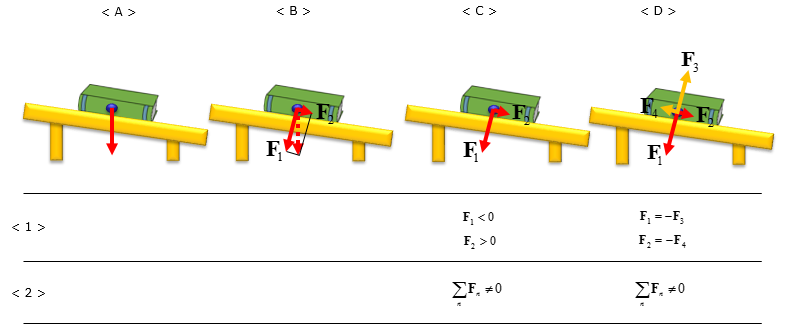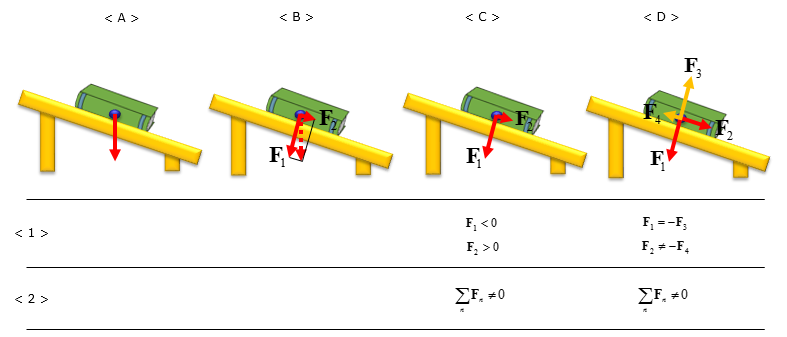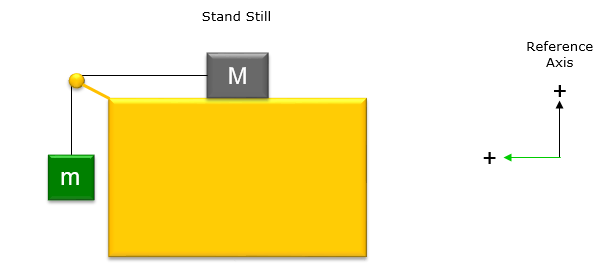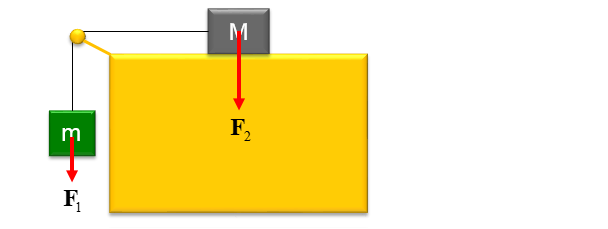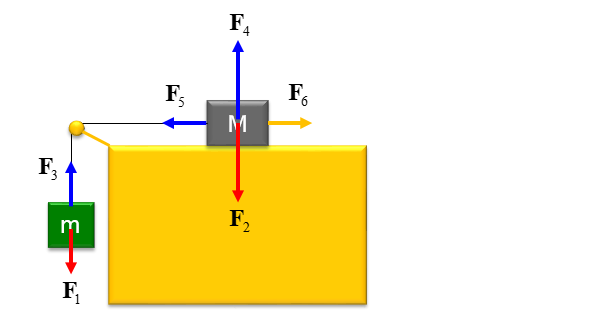|
Mechanical Engineering |
||
|
Freebody Diagram
Freebody Diagram is a kind of diagram that shows all the forces acting upon an object. You might have start seeing (drawing) this from high school physics class, but you would use even more frequently in Mechanical Engineering or classical physics. Since this diagram is so widely used, they often use the short term FBD to stand for Free Body Diagram.
Even though it is so important to analyze almost any dynamic system, it is not always easy to draw the correct diagram for a object / system. The main reason for such a difficulties would be that there are many forces acting on the object but not easily noticiable. So, you might have seen many Free Body Diagrams drawn by others but had difficulties in figuring out how those diagram was derived. You might often asked 'I think I know where these arrow comes from, but I don't know where that arrow comes from.'.
There is no short answers (short tips) to help you draw correct diagrams for any system. The only tip is 'Practice, Practice, Practice'. What I intend to do in this page is to give you as many examples as possible so that you would gradually obsorb tricks to draw FBD. However, there can be a couple of guidelines that my help you when you draw FBD or when you doublecheck if your FBD is correct or not. Some of important guide lines are
Example 01 >
Let's take a look at the following case. In this example, a book is placed on top of a table and assume that it is not moving (Not moving in any direction, left / right / up / down). Let's try drawing Free Body Diagram for this case.
I drew four different cases of FBD below. Some of them are correct.. some of them are not correct. I put some of incorrect FBD just to show you the though process to reach the correct FBD.
< A > In most case, this would be the first arrow (force vector) you would draw for this case because it is so obvious that there is gravitational force pulling down the book. That is, F1 indicate the gravity(gravitational force). If nobody is pushing the book to any direction and the book stand still, would this single arrow good enough for Free Body Diagram for this case ? The answer is NO. Why ? < B > If there is only the single force as in < A >, you must see the book move downward (breaking through the table and fall down to the ground). But you see the book is not falling down. This mean that there is another force F2 acting in oposite direction to F1. In this case, the magnitude of F1 and F2 should be same, but the direction is opposite cancelling out each other. Where does this F2 comes from. It is the force by the table upholding the book acting against the gravitational force (The force can be assumed based on Newton's third law). Is this good enough ? YES, assuming that nobody is pushing the book to anywhere. This FBD well describe the situation given to us (a book sitting stand still on the table). < C > Now let's suppose that somebody is pusing the book to the right with the force F3. Is this correct FBD ? NO because the condition given to us says 'the book is still stand still on the table'. In this FDB, the book must move to the right. < D > In order for the book stand still even when you push it like F3, there should be some other force opposing F3. It is indicated as F4. The magnitude of F3 and F4 should be same, but the direction is opposite cancelling out each other. Where does this F4 comes from ? It is the frictional force opposing the movement of the book.
Example 02 >
Example 03 >
Example 04 >
Example 05 >
|
||

